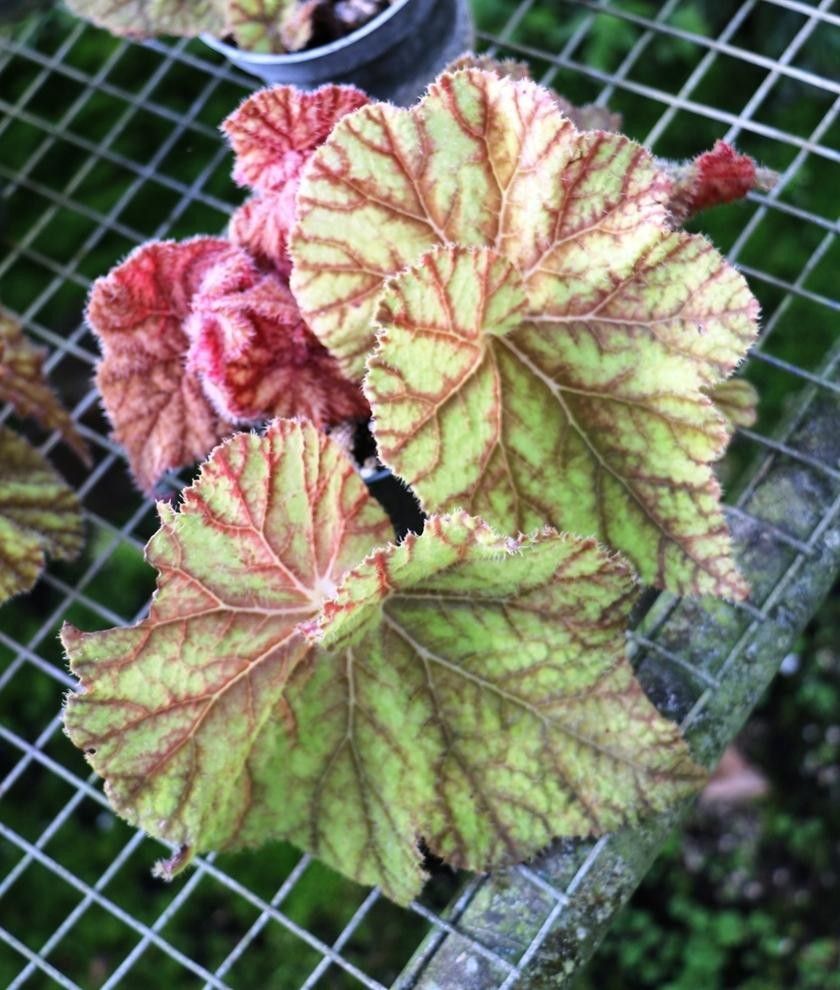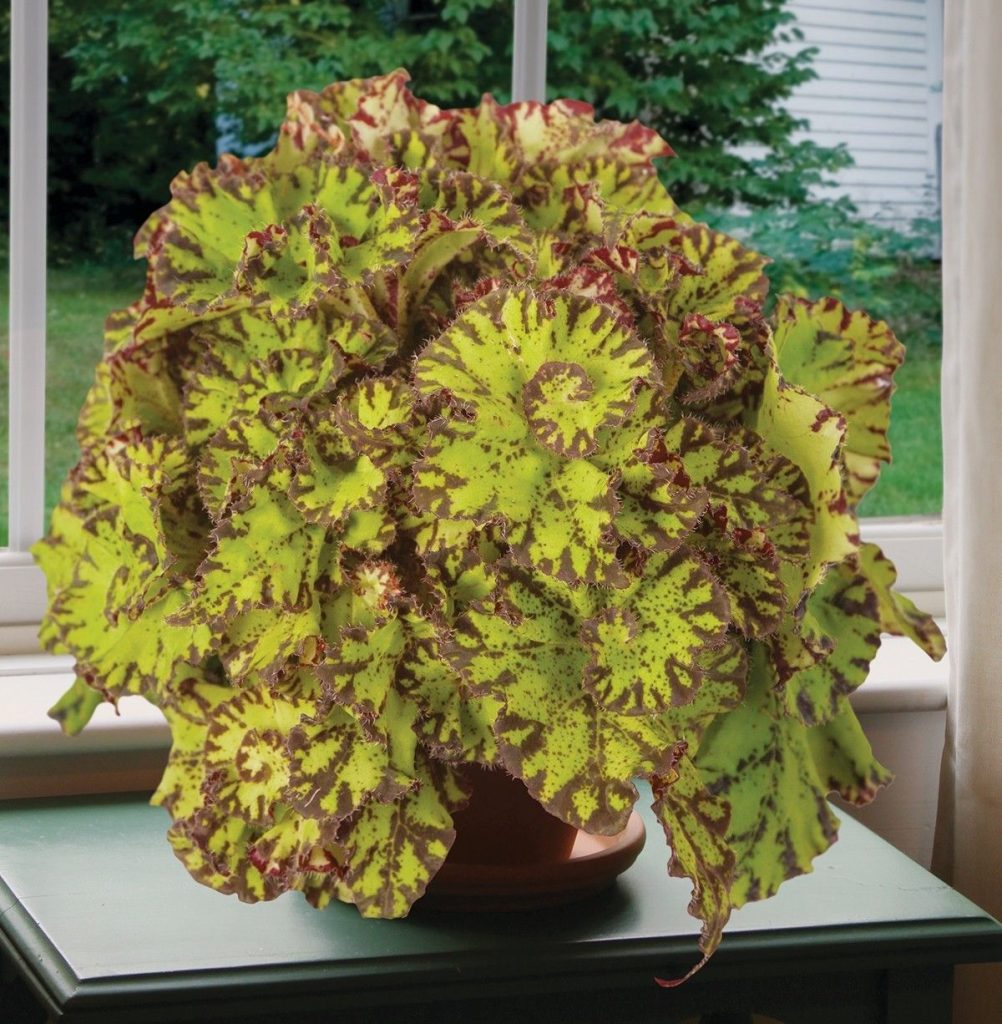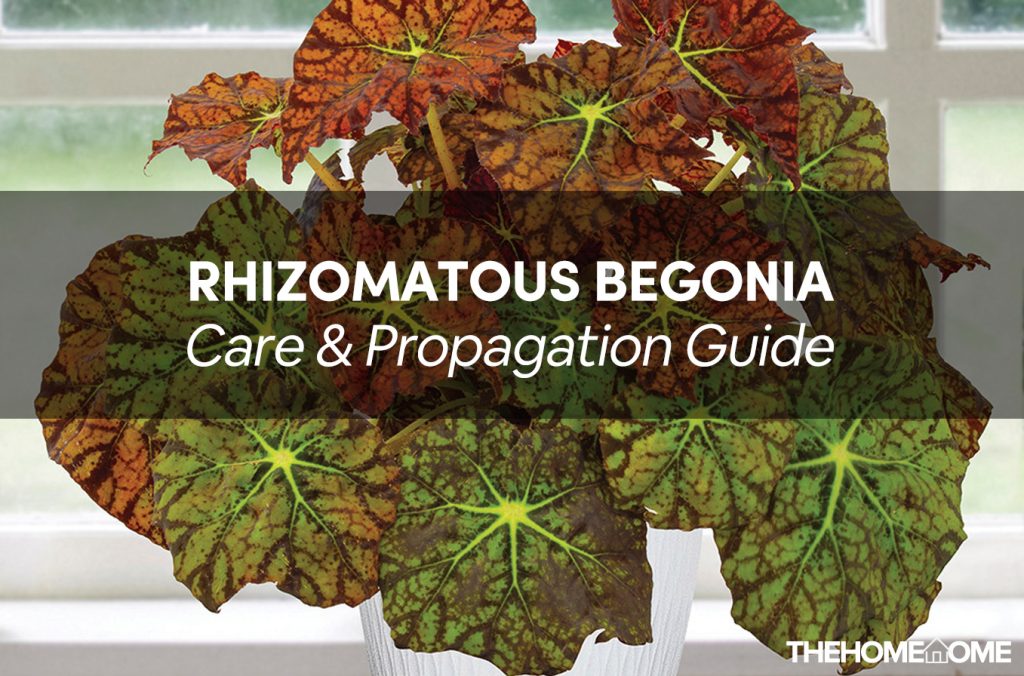The Begonia plant is a blooming plant native to North Asia, South and Central America, and Africa. Depending on the rootstock, the begonia is divided into three categories: fibrous, tuberous, and rhizomatous.
Although the begonia’s typical habitat is wet, cold woodlands and humid rainforests, certain begonias have adapted to drier climates. Begonia plants prefer bright, indirect sunshine, which helps them generate lovely patterns.
A well-drained soil also aids in the plant’s healthy growth, free of illnesses and rots.
The leaves of the rhizomatous begonia are lush with different colored stripes. They are particularly finicky plants, and it takes time to grow. They are not so difficult to care for, propagate and maintain if you follow the Rhizomatous begonia care and propagation guide we have provided.
Rhizomatous Begonia Explained
| Common Name | Rhizomatous Begonia |
| Scientific Name | Begonia rhizomatous |
| Plant Type | Annual |
| Plant Family | Begoniaceae |
| Light | Bright Indirect sunlight |
| Soil Type | Well-drained soil |
| Foliage Color | Burgundy, red, rose, silver, green |
| Flower Color | White, Pink |
| Temperature | 20º C – 25º C |
| Plant Size | 6-12 inches |
| Soil Ph | Neutral |
| Native | Mexico |
| Toxicity | Poisonous |
The rhizomatous begonias, which are natives of South America and Mexico are cultivated majorly for their beautiful and distinctively big foliage. This variety of begonia grows from the rhizomes.
One of the unique characteristics of the rhizomatous begonia is the fact that the rhizomes store water and nutrient for the begonia, and this helps to withstand stresses and diseases better than other varieties of the begonia. They are sturdy and hard and can withstand hardness.
There are different types of rhizomatous begonia. They include rex begonia, beefsteak begonia, and many others. Most of these plants grow in breadth but not in height. The elegant foliage of this plant comes in different amazing hues such as red, dark shades of green, burgundy, and others.
They are annual plants but might live as long as 3-4 years.

Rhizomatous Begonia Propagation
Propagation of a rhizomatous begonia is not difficult. When the plant is not doing so well, propagation can help develop baby plants. It is very interesting because you can propagate with different parts of the plants You can use stem cutting, leaf-cutting and for rhizomatous plants, you can use the rhizome cutting method.
Needs for propagation:
- A rhizomatous begonia of your choice
- Gloves
- Secateurs
- Perlite
- Garden soil
- Compost
- Propagation tray
- Warm Water (Optional).
1. Rhizome Cutting
Here is how you can use the rhizome cutting method.
- Cut some rhizome parts into medium pieces, removing as much root as possible.
- Fill the propagation tray with the soil mix.
- Plant the rhizome alongside the roots in the soil.
- Cover the rhizomes with a thin layer of soil mix, but do not cover them.
- Water them thoroughly with warm water to ensure that they are well-drained.
- Cover the propagation tray with the lid and lay it on a heat mat for best results.
- You can go for up to a month, and after that, you can repot.
2. Leaf Cutting
- Cut your leaf in a straight line.
- Stick the leaf in the ground.
- Make sure the leaf is fully hydrated.
- Allow at least 3 weeks for proper growth.
- As it grows, move it to larger pots.
3. Stem Cutting
- Cut any rhizomatous begonia’s stem.
- Plant them in the dirt and watch them grow.
- Water them regularly and place them in a bright, indirect area.
- Put it in a shady spot.
How to Care For Rhizomatous Begonia Plant
The care of this begonia variety is interesting and can be done by anyone, including you if you follow the care instructions.
1. Light
The rhizomatous begonia does not do well in direct sunlight, as it can cause sunburn or scorching of the leaves. Plenty of bright indirect light is perfect, so you can place the plant in a partially shaded area, where it can be exposed to enough bright light.
2. Water

It is very easy to overwater this houseplant; the reason you have to be careful when watering the rhizomatous begonia. When they are overwatered, they start showing signs of distress, and they lose their beauty. Most times, when they are thirsty they droop to show that they need to be watered.
You can stick a finger in the soil to check if it is dry enough. make sure the plant is not too moist for too long, to prevent bacterial infection and diseases.
3. Soil
Like other varieties of begonia, the rhizomatous begonia prefers evenly moist, and well-drained soil that is rich in organic material.
4. Humidity
The rhizomatous begonia requires high humidity to keep them growing. The regular household humidity can be just perfect for this houseplant. When the humidity is low or dry, you can store it in a bell jar.
5. Temperature
The adequate temperature for the rhizomatous begonia is between 20º C – 25º C. Hot temperature makes the rhizomatous begonia dry out quickly, the same way cold temperature causes the leaves to droop.
6. Fertilizer
Consistent fertilization keeps the rhizomatous begonia elegant and healthy. To use the fertilizer on the soil, dilute the fertilizer before using it to prevent fertilizer burn.
Growing Tips For Rhizomatous Begonia
- Repotting: The rhizomes of the begonia tend to grow large and thick, so you may need to repot as frequently as you notice that they are outgrowing the current size of the pot. When repotting, be careful not to hurt the roots or the stem of your plant.
- Prune the rhizomatous begonia to keep them from getting too full, and to keep them in shape. The pruning of this houseplant should be done after the plant finish flowering. Note however that before you begin to prune, sterilize the equipment you are to use in pruning.
- The best location for the growth of the rhizomatous begonia is in a shaded and bright environment, but must not be logged with water, or kept near unhealthy chemicals.
Frequently Asked Questions
Does the rhizomatous begonia flower?
Yes, flowers grow on the rhizomatous flower, but the essence of the cultivation of this plant is not necessarily for the flowers. The lush foliage is the main reason for growing this plant.
How do I care for my begonia during the cold season?
One effective way of caring for the rhizomatous begonia during the cold season is by bringing the plant indoors, and exposing it to bright light inside the house, rather than outside, in the cold. You can also add peat to the plant regularly, to increase insulation against cold.
Final Thoughts
The rhizomatous begonia is a striking plant that looks great in the outdoors and indoors.
The colors produced by this kind, as well as its rhizomes, set it apart from the others. Make careful to expose this plant to the early sun and then strong indirect sunlight to keep its beauty and brightness. Keep it out of the reach of children and dogs as well, as it includes some hazardous chemicals that can cause stomach upset.
Keep reading:

